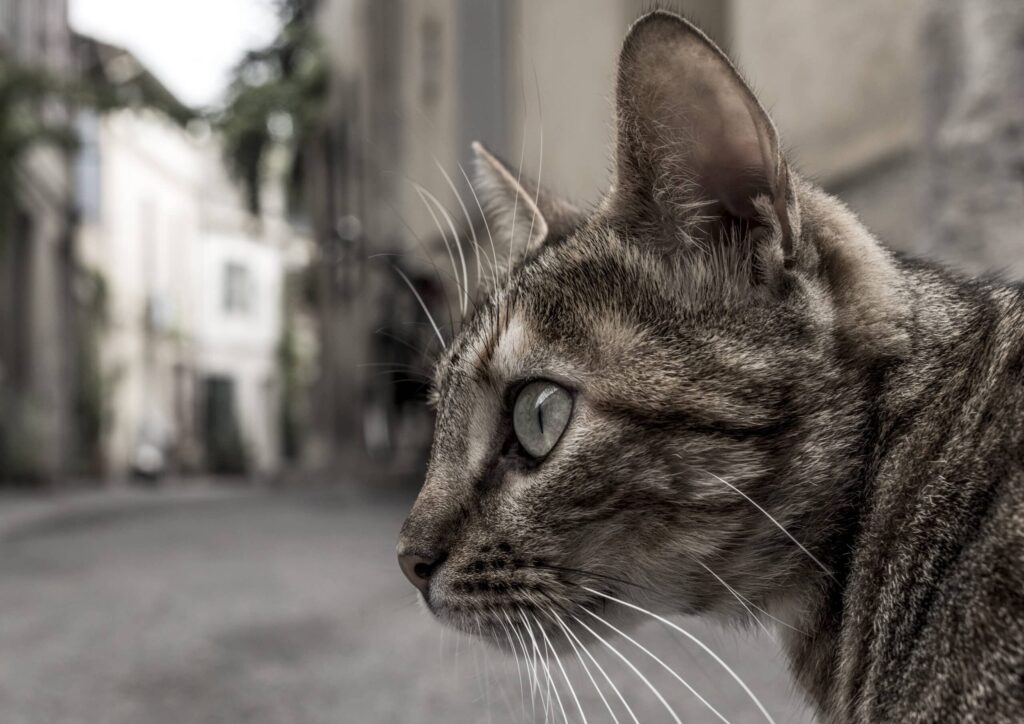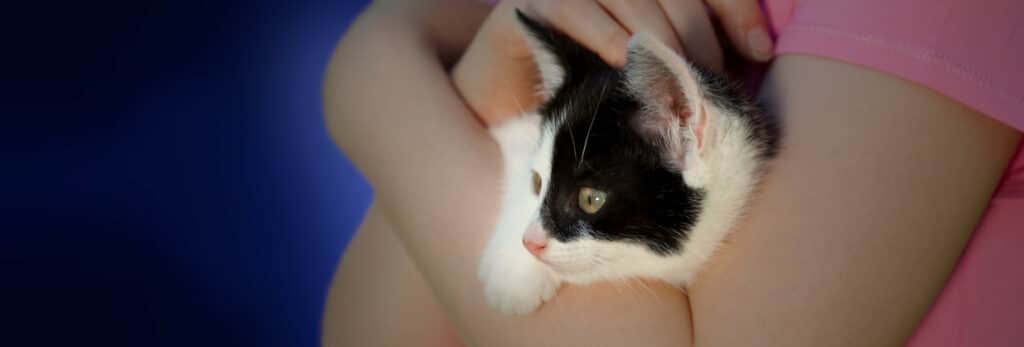
Why do Cats Have Different Colored Fur?
Our favorite felines come bedecked in stunning colors and patterns. In this article, we’ll answer the question, “Why do cats have different colored fur?”
From a tuxedo’s regal elegance to a ginger tabby’s fiery hues, feline fur comes in a kaleidoscope of colors. The question is, why? What factors determine the colors and patterns that make up each individual cat?
The answer lies in their genetic makeup, evolutionary history, and fateful encounter with humanity. Let’s dig in and answer the question, “Why do cats have different colored fur?”
A Pair of Genes
A complex interplay of genetics is at the core of a cat’s fur color. The genes responsible for fur color are known as “coat color genes.” These genes determine pigment type, distribution, and intensity in a cat’s fur.
The two primary pigments are eumelanin and pheomelanin. Eumelanin is responsible for black and brown colors, while pheomelanin produces red and yellow hues.
These pigments’ presence, absence, and interaction create the vast range of colors and patterns we see in the feline coat.
Black and Red
Much of the coloring in a cat’s coat stems from just two genes. One produces shades of black, while the other is responsible for shades of red.
Patterns
The patterns in a cat’s coat result from multiple genes interacting with each other to create stripes and swirls of varying widths and intensities.
Human Taste
Cats chose to throw their lot in with us, and we discovered we could manipulate the color and pattern of their coat through selective breeding.
Multiple Genes
A combination of genes can influence the color of a cat’s fur and the patterns on its coat. These genes are inherited and are subject to the usual rules of genetic dominance.
The gene responsible for producing black fur (the “B” gene) is dominant over the gene for orange fur (the “O” gene). A cat carrying two copies of the dominant “B” gene will have black fur. And a cat with two copies of the recessive “O” gene will have orange fur.
This explains why calico cats, who possess both “B” and “O” genes, often have patches of black and orange fur, creating the familiar pattern.
Of course, it’s not always this straightforward. Other genes can modify or dilute the effects of these base coat color genes. The “D” gene influences whether a cat’s fur color will be diluted. This dilution produces shades of gray (diluted black) and/or cream (diluted red).
What about Tabby Patterns?
The adorable tabby pattern results from multiple genes interacting to create unique swirls, stripes, and dots on a cat’s fur. The “T” gene controls the pattern’s appearance in a tabby cat.
A tabby’s pattern can be further modified by genes that affect the width and intensity of the stripes, resulting in tabbies ranging from classic to mackerel to spotted.
Put another way, the genes a cat inherits may be considered an artist’s materials, techniques, and style. And the resulting coat is a combination of paints, brushes, canvas, style, and technique.
Selecting for Camouflage
While domestic house cats come in various colors, their wild ancestors do not. In nature, wildcats have muted shades that blend into their surroundings.
A cat with a camouflaged coat is more likely to survive as a hunter. Successful hunters are more likely to breed and pass on their genetic makeup. Over time, natural selection has produced fur colors and patterns that literally breed success.
The striking variety of fur colors and patterns seen in today’s domestic cats have two main sources…
- Patterns and colors that match the local flora and ground color across many different ecosystems (natural selection).
- Colors and patterns humans find pleasing that lead us to selectively breed these cats (“unnatural” selection).
Over time, this combination of natural and “unnatural” selection has produced an incredibly diverse palette of colors and patterns.
Why do Cats Have Different Colored Fur?
The colors and patterns in cats’ coats result from a convergence between genetics, history, and human influence. Whether you’re marveling over the whimsical play of tabby patterns or enjoying the rich depths of eumelanin and pheomelanin pigments, a cat’s coat is a masterpiece.
The colors and patterns of each feline’s fur are a story written by its genes. It tells us something about a cat’s ancestors and the environment in which they adapted.
Next time you admire a cat’s fur, remember that it’s not just a coat. It’s a living canvas of biology, history, and the species’ relationship with humanity.












